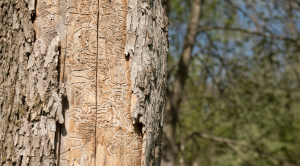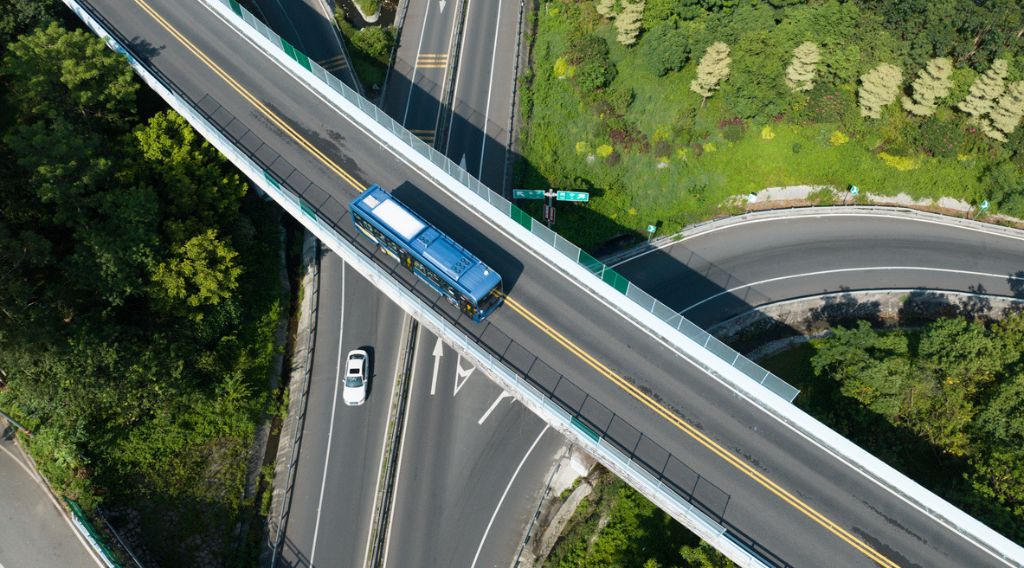
Climate change in the Midwest could degrade one of our forest’s primary defenses—cold weather—against an invasive beetle known as the emerald ash borer. As the tiny invader continues its spread in the Midwest, GPI is examining its impact in our home state of Minnesota. The beetle eventually kills a large number of trees in its path, generating large volumes of biomass in the form of wood waste. We’re looking at solutions that Minnesota and other states can explore to reduce the negative impacts from the emerald ash borer while finding strategies for the inevitable wood waste to benefit our environment, communities, and economy.
Here are three key things to know:
- Emerald ash borer spread cannot be stopped, but it can be mitigated. Proactive engagement and wood waste strategies are critical to slow the spread.
- Minnesota’s keystone ecosystems are threatened. Black ash is a critical species in northern Minnesota’s swamps and forests.
- State action can slow tree mortality and emissions growth while generating economic opportunities. Harvested wood products can support rural economies and store carbon.
So far, the cold and harsh winters of northern Minnesota have kept emerald ash borer at bay from the state’s black ash forests and swamps, an integral part of the regional ecosystem. However, this could change in the future, as winters continue to warm due to climate change, and emerald ash borers find favorable conditions for survival, with black ash trees at their disposal.
The threat of emerald ash borer to Minnesota’s rural and urban forests
The emerald ash borer is an invasive beetle that feeds on the foliage of ash trees and burrows into the tree to lay its larvae. The larvae feed on the inner bark, or “phloem”, which distributes water and nutrients to the tree. Originating in China, emerald ash borer was first recorded in North America in 2002 and was first documented in Minnesota in 2009. Since then, it has spread to 54 counties in Minnesota and is responsible for killing millions of trees and threatening healthy forest ecologies.
Minnesota is home to both the native green ash tree, most prevalent in the Twin Cities metro area and parts of southern Minnesota, and the black ash tree, present in forested wetland habitats in northern Minnesota. Black ash is an ecological keystone species present in swamps, bogs, seasonally flooded areas, and along streams. As a species, black ash regulates hydrology through the water table, cycles nutrients in the soil, and maintains carbon cycles both above and below ground.
Green ash is a popular urban shade tree that has seen significant mortality in the Twin Cities metro. All counties in the Twin Cities metro area have designated green ash wood waste disposal sites for homeowners who wish to dispose of infested, dead ash trees properly in an ongoing effort to educate on and deal with emerald ash borer in the region.
The wood waste implications of green ash mortality have been a topic of intense research. The large amounts of green ash waste wood from city, municipal, and private landowner sources represent significant emissions if simply landfilled, when recycling or repurposing could avoid emissions and support local markets and businesses through novel wood products. In contrast, the impact of emerald ash borer on black ash in northern Minnesota deserves further research. Since black ash is one of Minnesota’s most prevalent ash trees, additional research could provide important data on the emissions implications of black ash dying due to emerald ash borer.
Minnesota’s forests sequestered around 18 million metric tons of carbon in 2020, and the state has seen a trend of increasing forest carbon stocks and sequestration capacity over the last 15 years. The spread of emerald ash borer to northern Minnesota, which contains most of Minnesota’s over one billion ash trees, should be approached as a greenhouse gas emissions and ecosystems emergency.
Slowing the spread of emerald ash borer in Minnesota
Despite state-level quarantines on the transportation of ash firewood and regulated disposal of trees killed by the emerald ash borer, state boundaries do not exist for our flying, tree-eating beetle friends. Since the beetle has become so effective at spreading naturally (humans also contribute to its spread), the focus has shifted toward mitigation vs. prevention.
It is difficult to observe and predict future spread, further intensifying an already hard problem for state-level agencies. Minnesota’s battle against emerald ash borer has led to county-level quarantines on the transportation of emerald ash borer-killed wood to further slow the spread and protect our forests’ ecosystems, as emerald ash borer larvae can survive for months in dead ash trees while the wood is transported.
The Minnesota Department of Natural Resources actively tracks known emerald ash borer infections and has recorded its spread northward in St. Louis County, Crow Wing County, and southern Cass County. Emerald ash borer detection is highly limited and reliant on visual observations. While remote sensing techniques can be used, those may lie outside the scope or capacity of government entities.
While the spread of emerald ash borer is difficult to manage, existing research suggests that proactive and targeted thinning, as well as early identification and removal, may slow the spread. These strategies may also create sustainable biomass sources that can offset the emissions from the trees killed by emerald ash borer and store carbon long term.
GPI analyzes Minnesota’s forest-driven emissions reduction opportunity
The Great Plains Institute conducted a preliminary, high-level analysis to establish the greenhouse gas emissions potential of black ash mortality due to emerald ash borer in northern Minnesota. Some assumptions were made according to the literature, including the rate of spread for emerald ash borer (35 kilometers per year) and the failure of a cold climate to slow the spread further north.
To conduct the analysis, we obtained Forest Inventory and Analysis carbon estimates at the county level for Minnesota through the US Forest Service’s EVALIDator tool. They were then converted to carbon dioxide equivalent emissions using the US Environmental Protection Agency’s Greenhouse Gas Equivalencies Calculator, and emerald ash border spread was calculated using ArcGIS Pro, a geospatial analysis and cartography tool.
Initial findings from the analysis indicate that if a steady spread of emerald ash borer continues throughout the state unabated, over 18 million metric tons of carbon stored in black ash biomass will be threatened by the emerald ash borer by 2030. That is the carbon dioxide equivalent of emissions from 17 coal-fired power plants producing energy for a year.
Since it can take one to three years for ash tree mortality to take place after initial emerald ash borer infestation, the emissions effects from ash mortality will take significantly more time to manifest. While the effects may be delayed, without treatment or management, the USDA has found that emerald ash borer can induce 98 percent mortality in stands just six years after detection. Such widespread mortality would impact Minnesota’s northern forests’ ability to continue to sequester carbon, in addition to devastating ecological impacts in sensitive ecosystems.
Advancing solutions for emerald ash borer and Minnesota’s bioeconomy
Mitigation of emerald ash borer spread is an ongoing and challenging field of study, as chemical, biological, and mechanical control applications may need to vary highly to be effective on a site-to-site basis. Incorporating mechanical control measures in early detection stages, such as targeted tree reduction measures of removing larger trees that are more attractive to initial emerald ash borer spread, could generate new sources of biomass with the large amount of wood that is removed.
These biomass sources could support Minnesota’s greenhouse gas emissions targets and support innovative bioeconomy solutions, such as biochar or sustainable aviation fuel feedstock. Large quantities of standing dead wood produced by emerald ash borer invasion would also create opportunities for novel forest products that can use less desirable waste wood.
The Minnesota Forest Resource Council has already recommended additional research into how wood waste could be used in the bioeconomy, which could create a sustainable path for dealing with the impacted trees.
As described by the Bioeconomy Coalition of Minnesota (facilitated by GPI), “the bioeconomy refers to the conversion of biobased feedstock (agricultural and forestry biomass, municipal and livestock waste) into biobased products like biofuels, renewable chemicals, biomass thermal energy, and BioCNG [compressed natural gas].”
Increasing interest in Minnesota’s bioeconomy has spurred ongoing partnerships, such as the Bioeconomy Coalition of Minnesota, and research at the University of Minnesota. Currently, Saint Paul and Minneapolis alone expect wood waste from green ash to increase from 400,000 tons to 500,000 tons in 2028.
Supporting additional research and partnership for addressing emerald ash borer in Minnesota
Given the scale of the problem and the potential amount of biomass produced, tree removal solutions should be researched further to identify appropriate species replacement options for black ash in forested wetlands, as well as replanting and reseeding efforts to maintain key ecological functions.
The Great Plains Institute is focused on furthering research and partnerships that address the key issues in Minnesota associated with emerald ash borer—proactive treatment, products, and technologies from waste wood, and rural and local economic development supported by a strong bioeconomy.
Stay up to date with our future research by signing up for our newsletter or contact us for more information.


